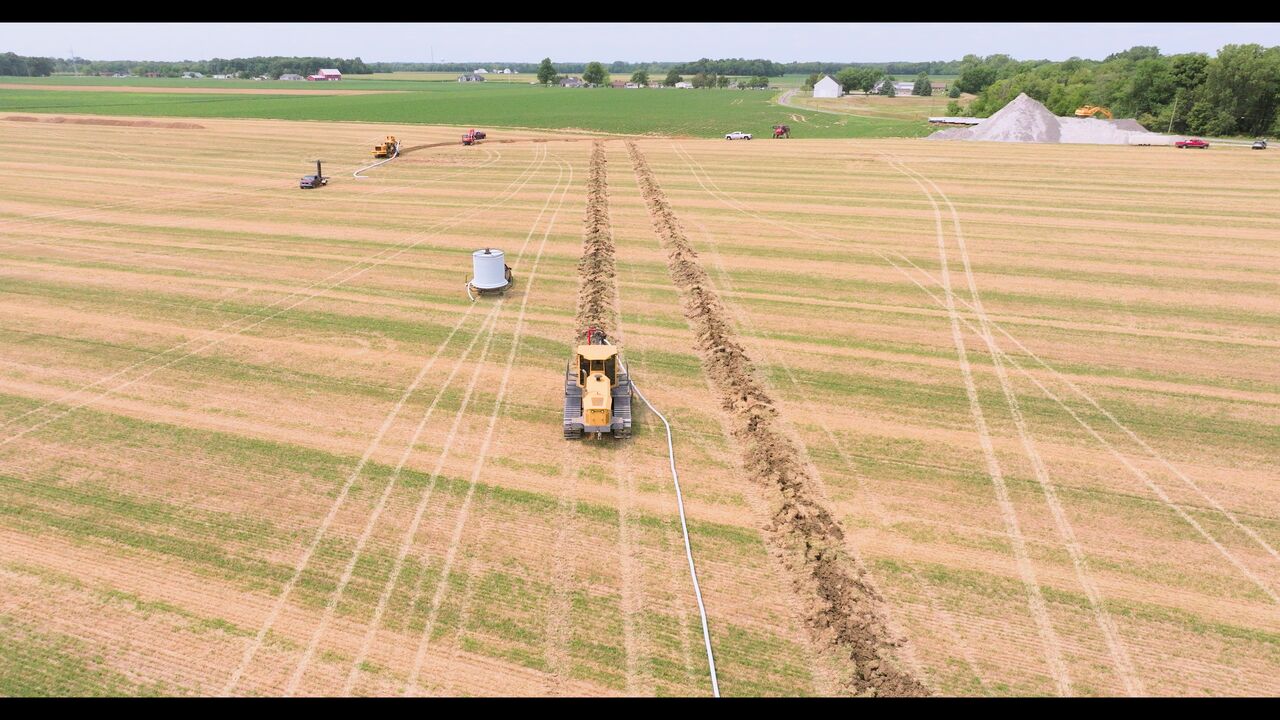Industry News and Awards
June 28, 2024 / 3 minute read
Mind the Gap: Data Drives Trend of Tighter Spacings

No industry understands cost-benefit analysis like agriculture. There’s a calculation behind every decision on the farm — machinery, seed varieties, nutrient management and field drainage. And it always comes down to the question, “Is the investment worth it?”
Technology provides farmers and landowners more data than ever to inform those decisions. When it comes to drainage tile, there is a clear trend: Installing field drainage with tighter spacing reaps rewards with the crops.
“Yield monitors have done more to affect the spacing than anything else because you can literally see a yield spike when you go over a tile line,” says Tim Dahl, an ADS Sales Manager based in Minnesota. “It’s real-time information the farmer or landowner can see. There’s no disputing it.”
Soil type — such as heavy clay or light and sandy — is the primary factor in determining the ideal spacing for a field. But in all types, the yields show the benefit of narrower spacing than a generation ago.
Space Exploration
Steve Gerten started installing agriculture field drainage in 1974. “We were primarily putting in 50-foot spacings,” says the owner of Inbody Drainage Company in northwest Ohio. “Then it went to 40 feet, and now, 30- or 35-foot spacings are normal.”
The shift is a direct result of data that show the return on investment. Gerten tells farmers the benefit can average about 15 bushels an acre on corn and seven to eight bushels an acre on soybeans. As every farmer knows, there are many variables to specific numbers, but the widespread adoption of tighter spacings shows the value of them.
Another benefit corresponds to changing practices in the field. No-till and cover crops continue to gain ground, and those conservation practices rely on good drainage to be successful. The development of narrower tile spacing is perfectly suited for the new demands of the field.
Split the Difference
At Inbody Drainage Company, half the jobs are now splitting existing tile systems, effectively narrowing the spacing. “We’re splitting 50 footers, so the farmer ends up with 25-foot spacings,” Gerten says. It’s the same in other states.
“In places like Iowa, where tiling has been going for decades, contractors are splitting lines with 70-foot spacings,” Dahl says. “There’s so much information now about how quickly that pays off.”
Numbers Add Up
Tile design is based on the understanding if a crop sits in an oversaturated state for more than 48 hours, there will be some yield loss. When agriculture farm drainage started a couple of generations ago, 50- or 70-foot spacings began to reduce oversaturation.
As yield monitors became widespread, they showed a significant disparity between crops right above the tile lines and those in between them. Yes, 70-foot spacings helped. But 35-foot-spacings would be far more effective and worth the investment.
“Farmers and landowners have more information at their fingertips than they’ve ever had,” Dahl says. “That’s helping them make quicker, more prudent decisions. Narrower spacings are something they can look at and know that they’re going to get a substantial return.”
To learn more about tile spacing and see how tighter spacing can help improve your yields, contact an ADS sales representative today.
